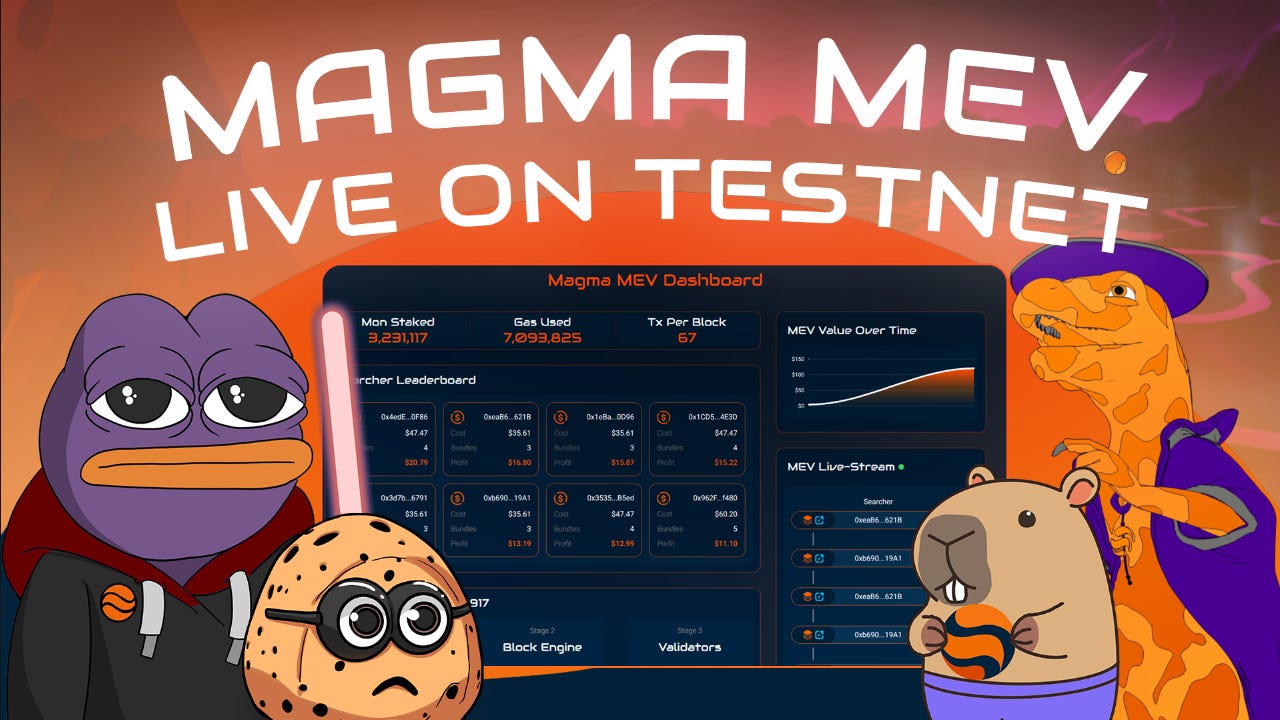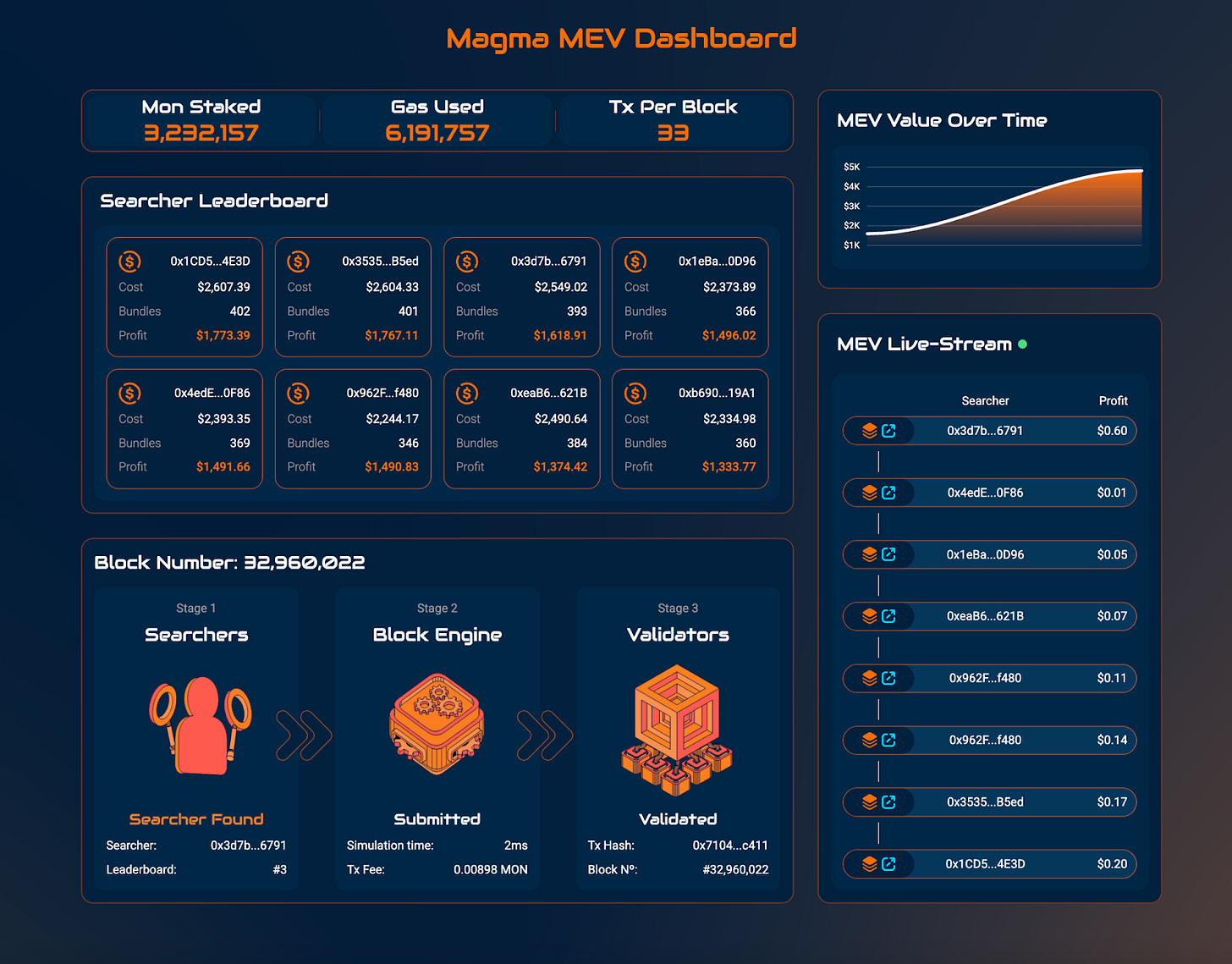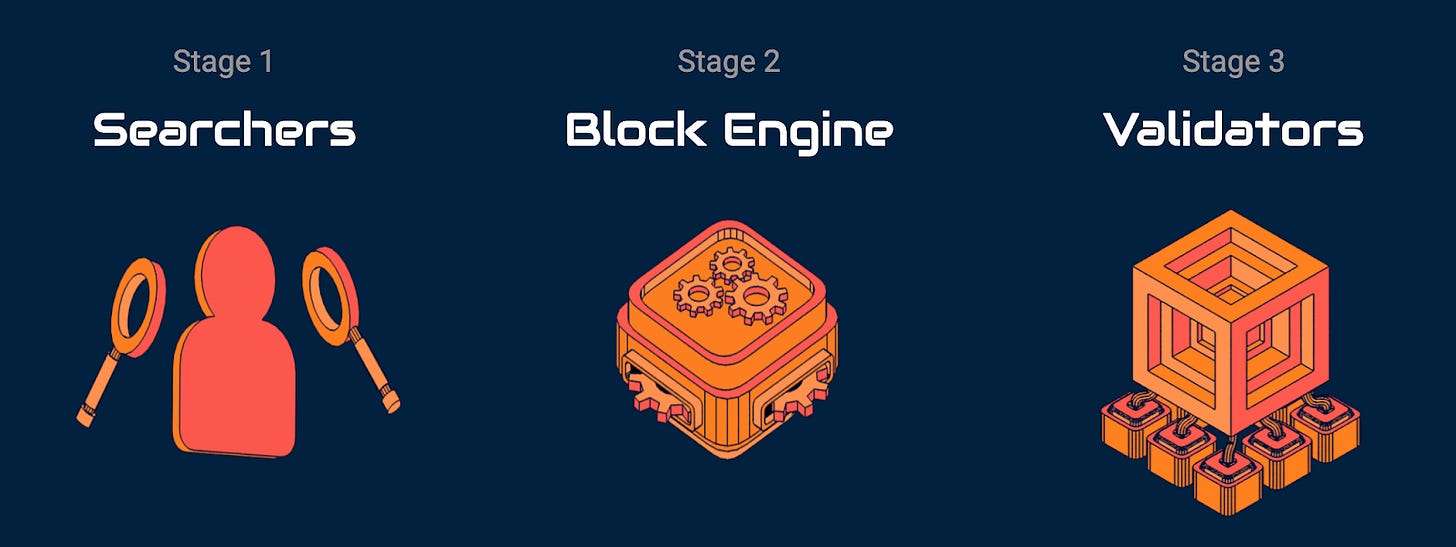Magma MEV: Live on Monad testnet, powered by the fastest Block Engine in crypto
We’re thrilled to announce that the Searcher API (stage 1) and Block Engine (stage 2) of Magma MEV have been successfully deployed on Monad testnet. Alongside this milestone, we are releasing our dashboard which simulates and visualizes the MEV process live on testnet.
This announcement marks significant progress towards our first MEV north star goal: Removing PBS (Proposer-Builder Separation) and the associated latency between relayers and proposers. Our performance metrics on testnet have been outstanding, and we can now say that we are running the most competitive block engine in crypto. In summary, the successful completion of stage 1 and stage 2 MEV development means that Magma MEV will allow searchers optimal timing to find arbitrage opportunities, generating optimal yield for validators and stakers.
Magma MEV Dashboard
Our MEV dashboard simulates and visualizes the flow of MEV bundles on Monad testnet. A cohort of example searcher bots are programmed to submit bundles for arbitrage opportunities every 100 blocks on Monad testnet. These arbitrage opportunities allow the searcher to profit from DEX mispricings of an example token on Pancakeswap. For now, the transactions are posted to Moand testnet through a normal broadcast. The next step of the process will be to implement the MEV sidecar, similar to MEV-boost on ethereum, that will allow searchers to send these transactions as bundles through the block engine.
View dashboard→
MEV Overview
Magma MEV consists of three stages. The first is the searcher API, where searchers submit bundles to the Block Engine. The second stage is the block engine, where bundles are processed and simulated to provide revert protection. The third is the validator sidecar, where bundles are received from the block engine and included in blocks produced by the validator. As of today, stage 1 and stage 2 are live on mainnet. Stage 3 is pending final development.
Transaction simulation and revert protection
One of the key benefits that we are able to offer with Magma MEV is transaction simulation and revert protection. This is done by the block engine. The benefits of these features are significant for preventing failed transactions, optimizing block space, and selecting maximally profitable bundles. These benefits ultimately transfer both to validators and gMON stakers. Our block engine is rust-based and highly performant, able to simulate blocks on Monad testnet in single digit millisecond times.
Importance of low-latency in MEV process
Our MEV north star is reducing latency and intermediary steps in the MEV process. On a high throughput chain such as Monad, this is crucial as searchers have a very limited time to submit bundles (less than half a second). Every extra millisecond we can give to searchers to submit their bundles allows them to find and profit from more arbitrage strategies. Our MEV process contains significantly fewer intermediaries than the Ethereum MEV process and is closer in design to Jito on Solana. Magma MEV is posed to redefine low-latency MEV processing, bringing us closer to empowering searchers, validators, and stakers with optimal arbitrage and yield opportunities.







Dragons have their own kindom!!!
Welcome to join !!!
Gmagma!!!
Gmagma
Roarr